Insider’s Itinerary: Barnes Foundation
Save this guide. Book your ticket. The best modern art museum is in...Philly?!
Welcome to The Insider’s Itinerary: your go-to art guide for all the special, unusual, and just plain helpful things that’ll give you a leg up on your next museum visit (or let you live vicariously through). Today’s edition: the best museum I have ever been to—the Barnes Foundation in Philadelphia.

I love art trips. But finding planning and researching them isn’t easy. When I started The Rose Period, I knew I wanted to create art museum guides to solve two main problems:
You love to plan trips around art - and know the best ones take some digging! These guides will ~reveal~ the most special art destinations - hidden gems, worth-the-hype spots, and exactly how to turn them into the perfect day (or weekend).
You’ve been dying for a resource that gives you a leg up. I’ve lost count of how many times I’ve arrived at a museum with zero context, no tour booked, and 50 tabs open on a mad dash for research. You shouldn’t have to do that! This guide will give you all of the most interesting, unexpected things to know - so you can stroll in with a little extra cachet.
Our first itinerary will be on the inimitable Barnes Foundation in Philadelphia - aka my new favorite place in the world.

BARNES FOUNDATION: THE FIRST MODERN ART MUSEUM IN AMERICA
49 Picasso’s. 59 Matisee’s. 69 Cézanne’s. 181 Renior’s. All owned by one man?! Stacked together in one room?! The Barnes Foundation is Philadelphia is the most fantastic private collection of modern art – and effectively the United States’ first modern art museum - that you’ve never really heard of. And it’s all an easy trip away.

KNOW BEFORE YOU GO:
What makes this museum different? The Barnes Foundation is unlike anything you’ve seen before - hundreds of famous works of art you’ve only read about - tastefully crammed together in one room. There are no distracting wall plaques or white walls. Paintings are hung in symmetrical arrangements flanked by metalwork and candles. It’s a whole new way of seeing art. Your soul will thank you for the visit.

Who was Dr. Barnes? Yes - our untraditional hero of the story. Dr. Albert Barnes (1872-1951) was an eccentric billionaire (with a chip on his shoulder) who spent his fortune amassing one of the world’s greatest collections of modern European art. He grew up in a poor working-class neighborhood, took up boxing to pay his way through school, and struck rich by inventing a cure for venereal disease.
The interesting story is what he did with his money - Barnes was ahead of his time. The doctor had no formal education in art but developed an unusual taste for it.
Barnes made his way through Europe collecting modern art before it was cool (or even socially accepted). His first trip to Paris resulted in Picassos, Cèzannes, and America’s first Van Gogh. Within 10 years, he acquired more than 900 paintings. He started the Barnes Foundation in 1922 to teach people the value of art. The rules? No posh parties. No museum loans. The art couldn’t leave.
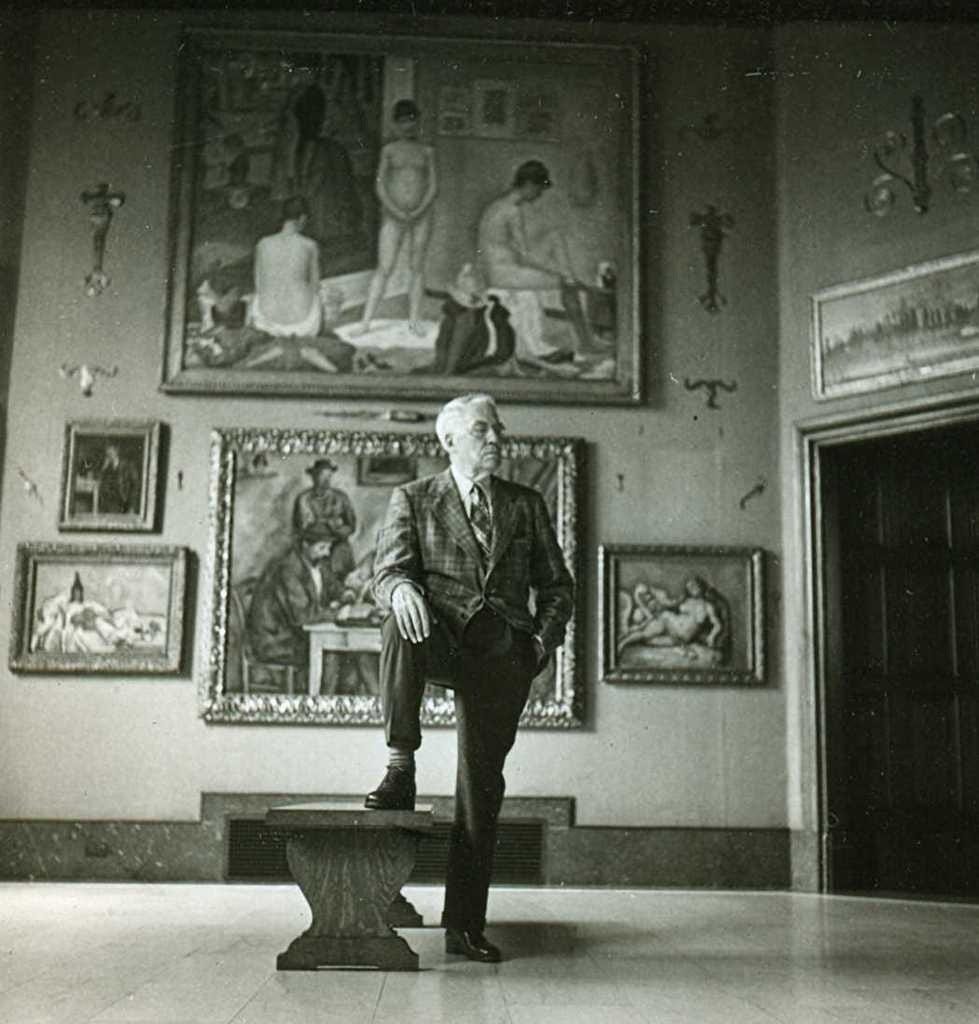
The big idea: Barnes wasn’t just collecting art - he was on a mission to change how people saw it. The Barnes Foundation was designed to be a full-blown educational experiment (not a sceney museum). He believed people of ~average~ intelligence (hey!!!) could learn to appreciate art, just by knowing how to look.
His method? Ditch names and dates - focus on the way the paintings make you feel. He arranged works in salon-style “ensembles,” mixing Reniors with African sculptures, Pennsylvania Dutch furniture, and metalwork (iron hinges, keyhole covers, door latches flank the paintings as equals).
The idea here is to get you making your own connections. Suddenly - a swirl of a Matisse echoes the curve of a hinge. You start seeing shapes you’ve never noticed.
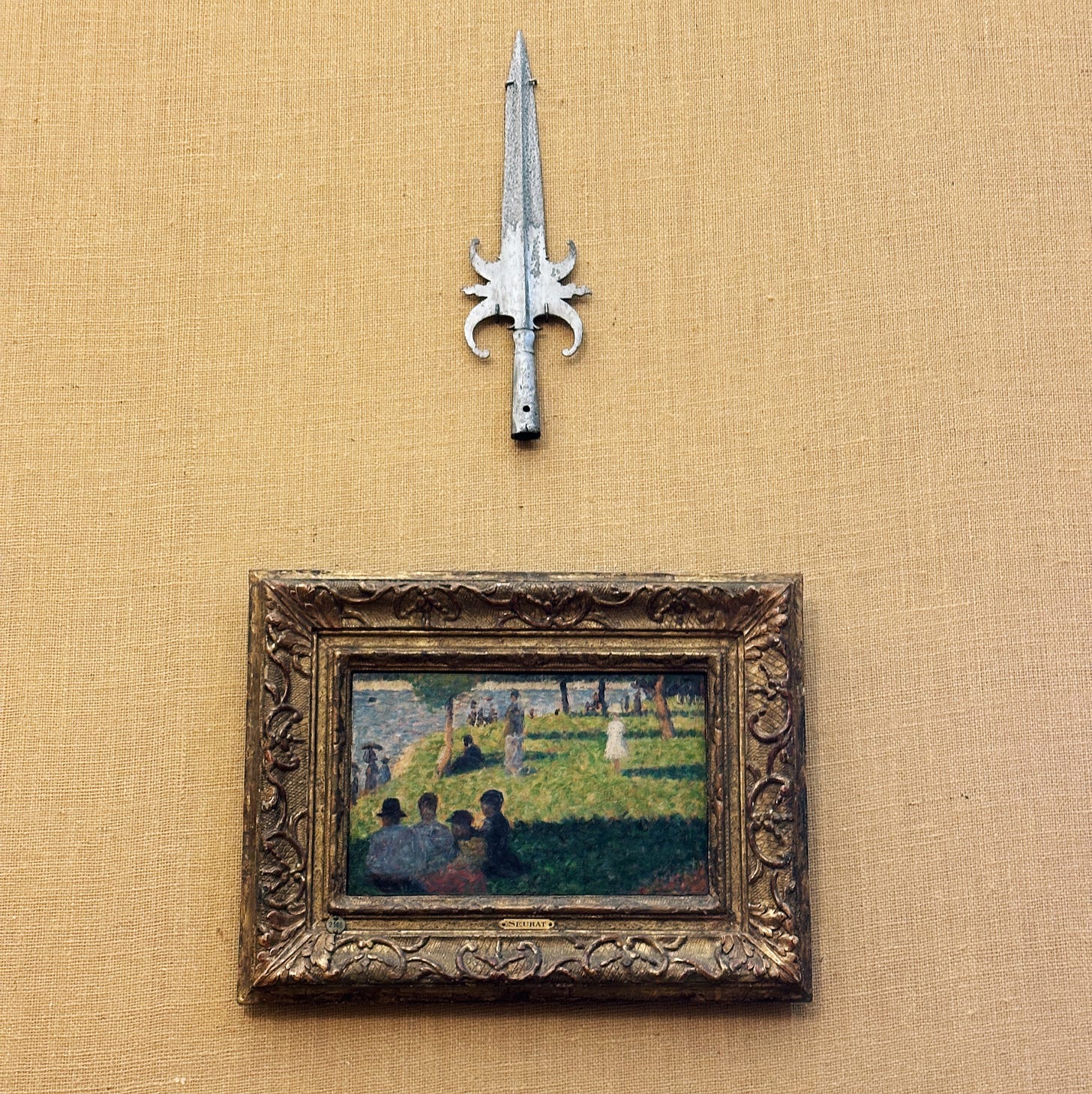
My favorite part? Mixing in everyday objects humbles the art - and makes you appreciate the beauty in the every day.
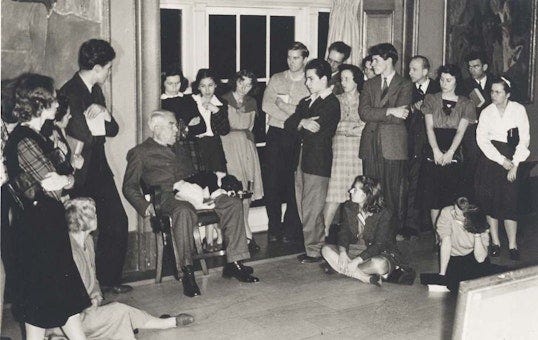
But Barnes took his ideals to an extreme. You couldn’t just walk in; you had to write a letter and take a class to see the collection. And because Barnes made the rules, Barnes decided who could get it. If you were part of the elite? Denied. T.S. Elliot? Rejected. Le Corbusier? No dice. The New York Times art critic who wanted to write about the foundation? His letter back was a simple “NO” signed by Barnes’ dog (proof here). But a plumber from Philadelphia who wanted to learn? Well, of course, right this way.

Controversy, you say?
Do I ever! After Barnes was tragically killed in a car accident in 1951, he left behind an iron-clad will. The gist - the art was never meant to leave his original building in Merion, Pennsylvania. No loans. No tours. No reshuffling.
Fast forward to 2012: the collection now sits in a brand-new museum in downtown Philadelphia. What happened?! Well you MUST watch The Art of the Steal. It’s just over an hour (free on Youtube) and unpacks how the city of Philly found a legal loophole to move the collection - despite fierce opposition from art historians, Barnes loyalists, and pretty much anyone who read his will. It’s so juicy. A must-watch even if you’re not museum-bound anytime soon.
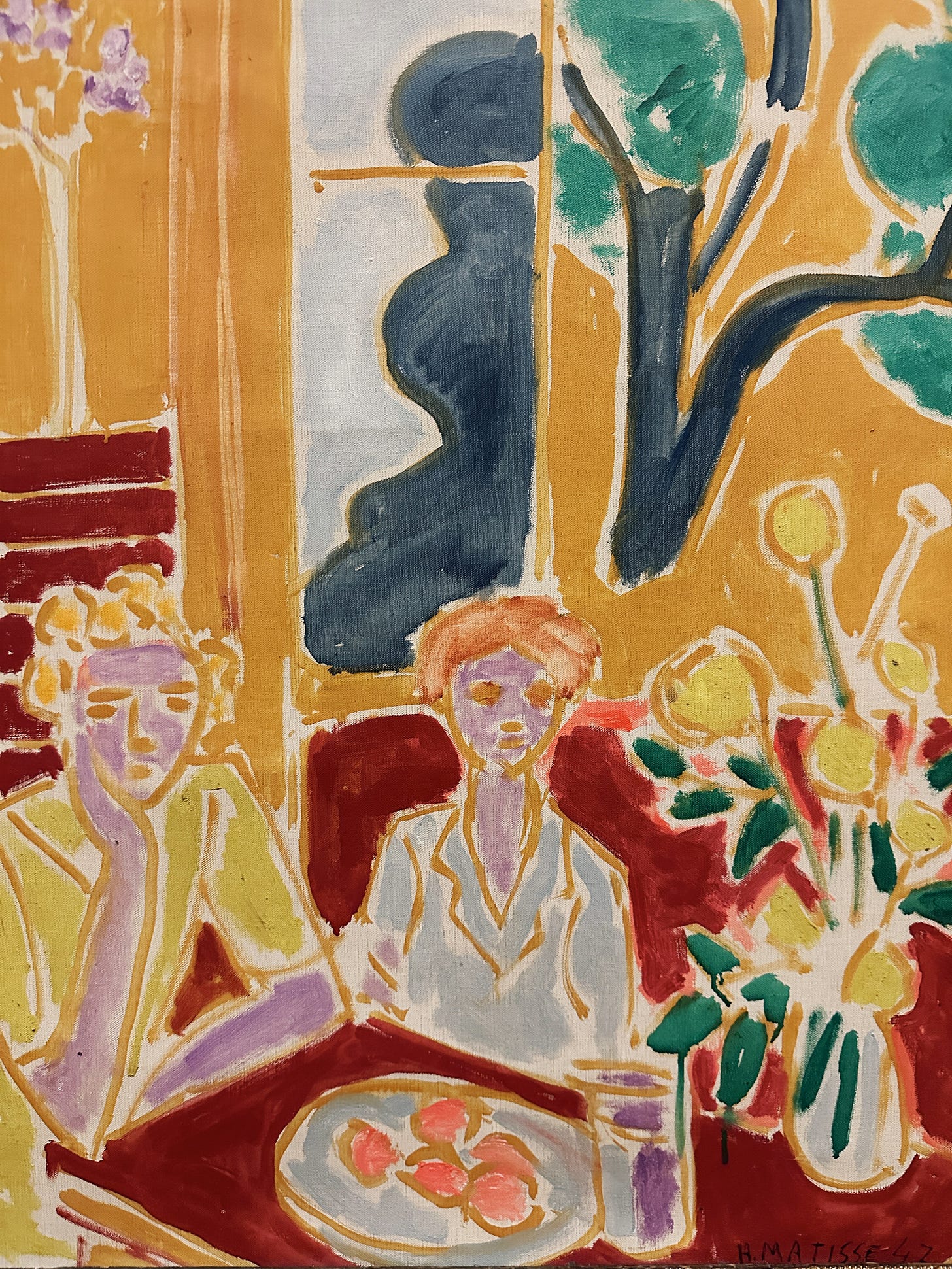
How to plan your trip:
Book a train in advance. Our tickets from NYC were $23 dollars each way.
Suggested train times from NYC: 9:30AM and 5:18PM from NYP to PHL. You need at least four hours in the museum - we had wanted to do Barnes and Philadelphia Museum of Art in the same day. Looking back it would have been impossible. There’s too much to take in at Barnes.
Get a guided tour. Please! It’s so easy and adds so much value to the visit.
Do a weekday if you can. We took Friday off and were back for Alisha’s reservation at Jean’s on Lafayette by 9pm.
Watch The Art of The Steal before you go (no negotiations). You can also read the new Barnes biography that came out days after I visited (I’m halfway through).
COPY THIS ITINERARY:
After years of talking about it, I finally booked a trip - my two art-minded gfs Alisha and Marie in toe. Here’s a recount of our perfect day - along with little-known facts & secret tips, which you can and should copy.
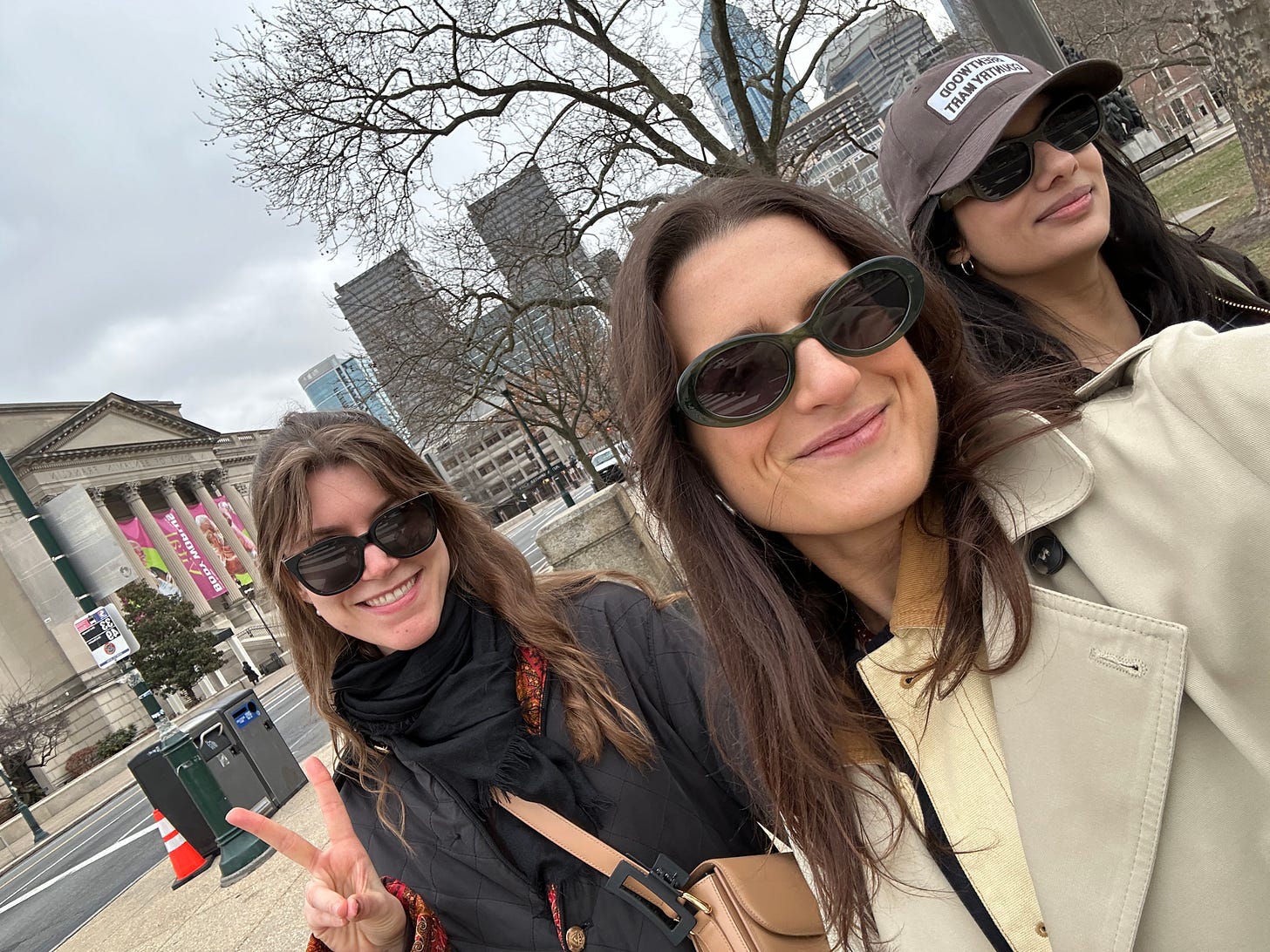
8:30 AM: Left my Dumbo apartment with nothing but a little purse and took the F Train to Penn Station at 9:00am. I found Alisha by happenstance in the bathroom - we got ChaCha Matchas and marveled at how fancy Moynihan Train Station was.
9:30 AM: Joined Marie who saved us a little four-seater the train. The train left on time and we leaned in to talk about money, boys, and art for the one-hour-fifteen-minute journey.
11:15 AM: Arrived at Philly station. It was a twenty-minute walk to Barnes and we snacked on some mentos and ginger candies Alisha stashed in her bag.
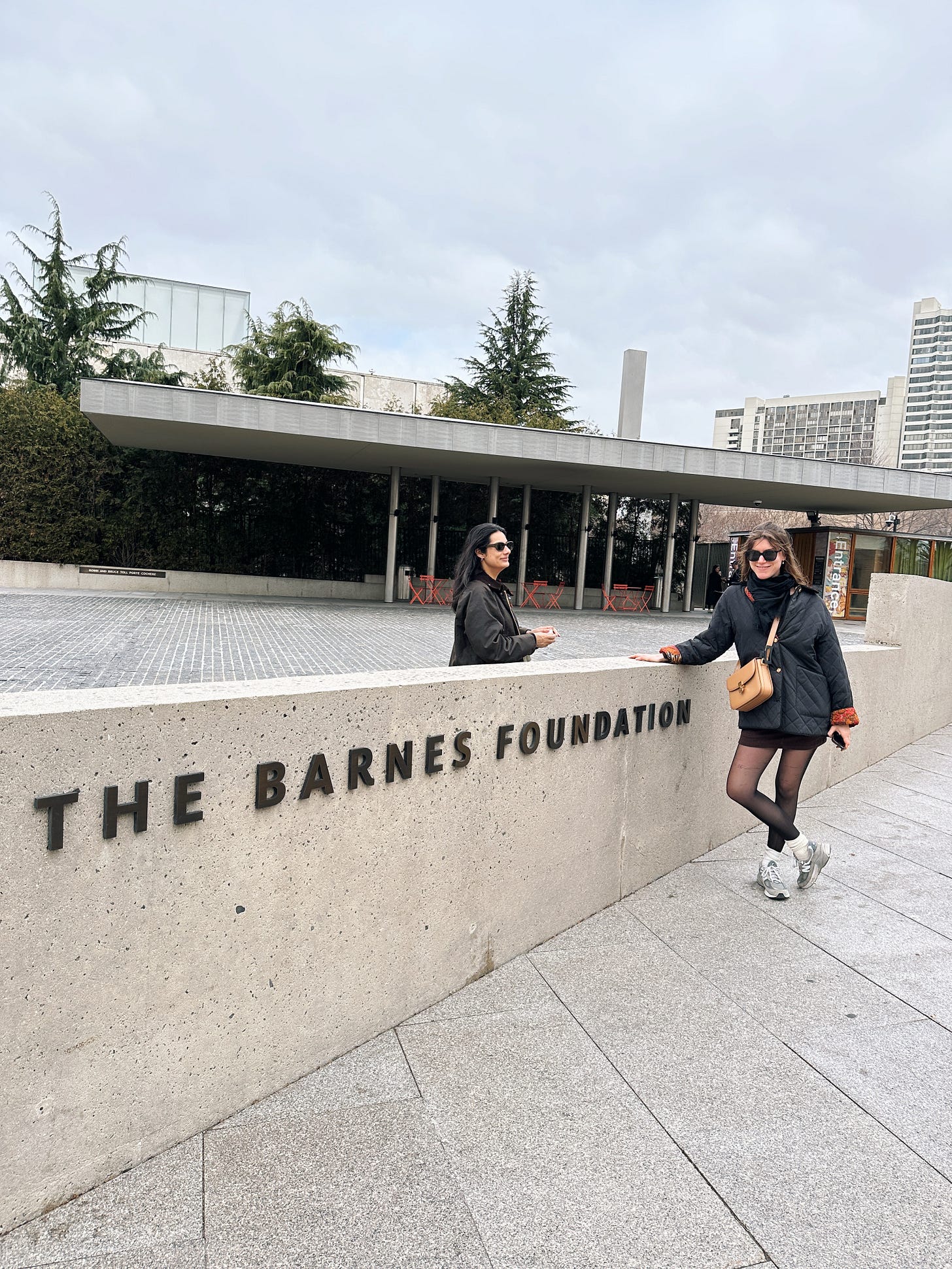
11:45 AM: Got our tickets! Our original plan was to do a lap downstairs, get lunch, and finish upstairs. After we walked in, we were so overwhelmed by the amount of art that we immediately turned around & booked ourselves on the 1-hour highlights tour. It started at 1:30pm and so we made a rez at the cafe before it started.
12:00 PM: We popped our heads into the 15-minute art talk the Foundation gives at the top of every hour. You must attend! It’s a perfect set-up to the visit. Marie had a crush on the guide. He talked confidently about the museum’s backstory and we applauded him when he finished.
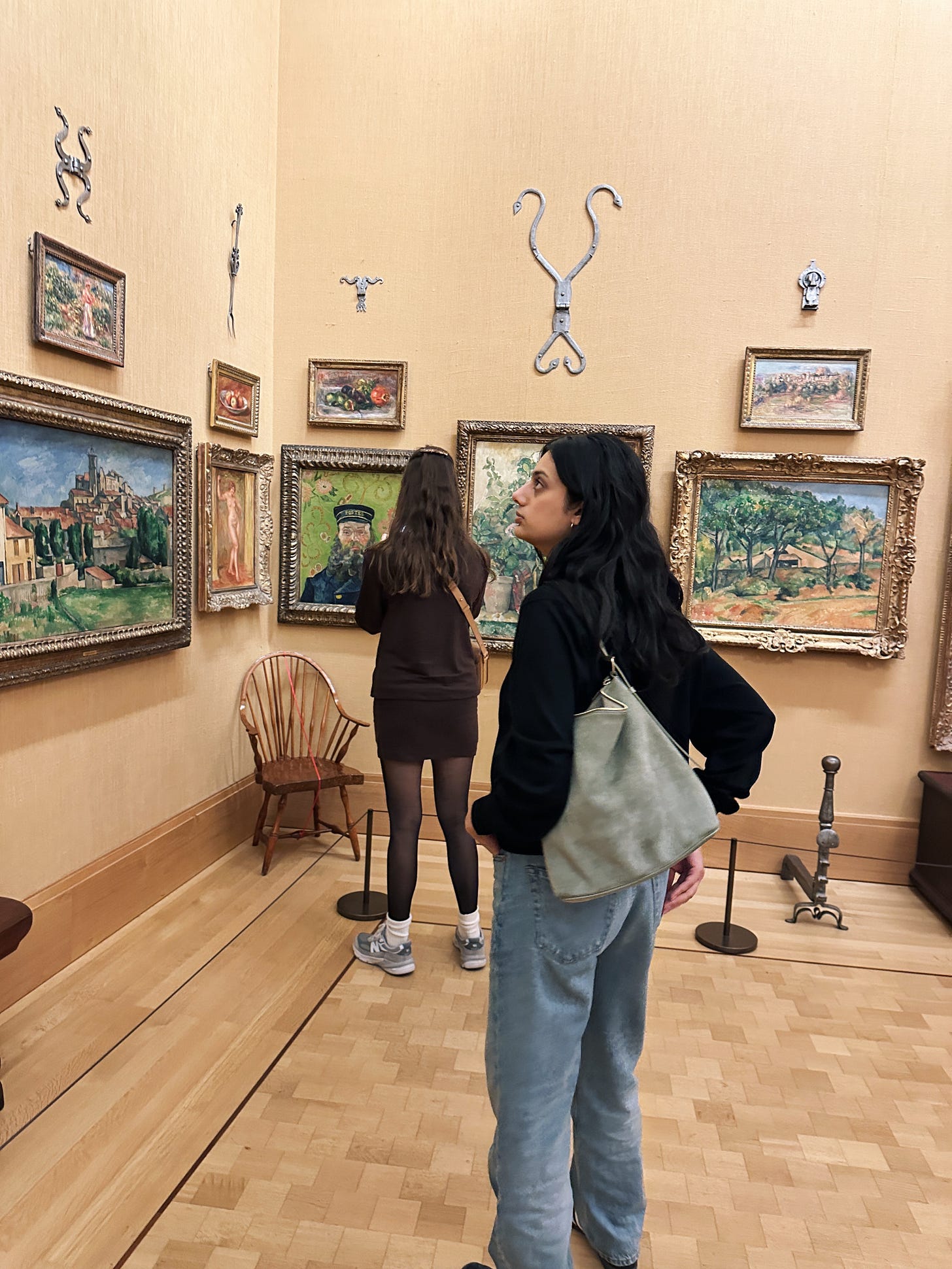
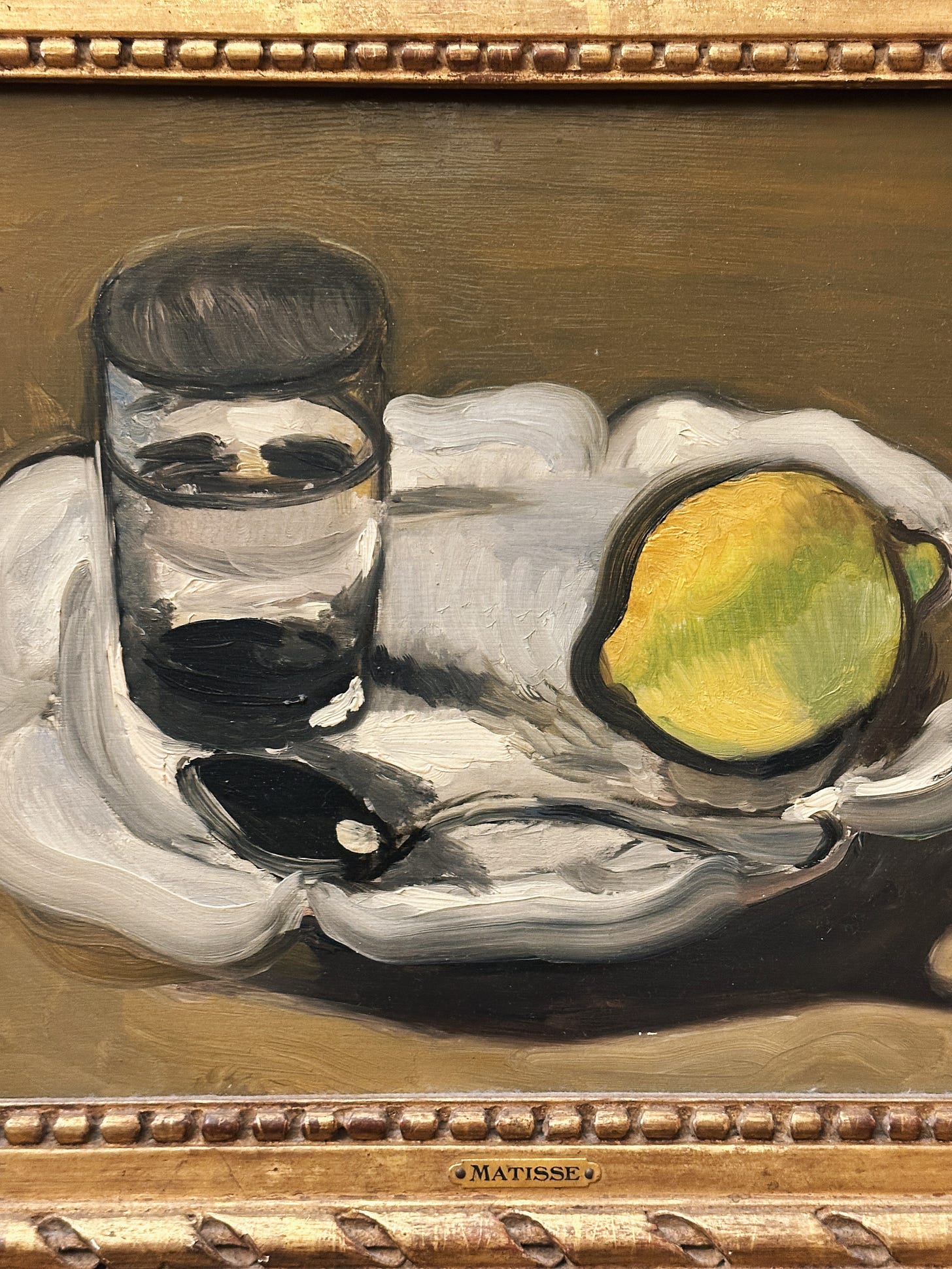
12:30 PM: Lunch. The cafe was perfect. We ordered three chopped salads with chicken and three diet cokes. Alisha and Marie took some still-lifes of our Diet Cokes while I was in the bathroom.
1:30 PM: Our tour started! The docent learned that Alisha worked at Christie’s and was immediately intimidated. Alisha did indeed correct her a few times.

A few key pieces that stood out:
Van Gogh’s Portrait of the Postman Joseph Roulin (1889)

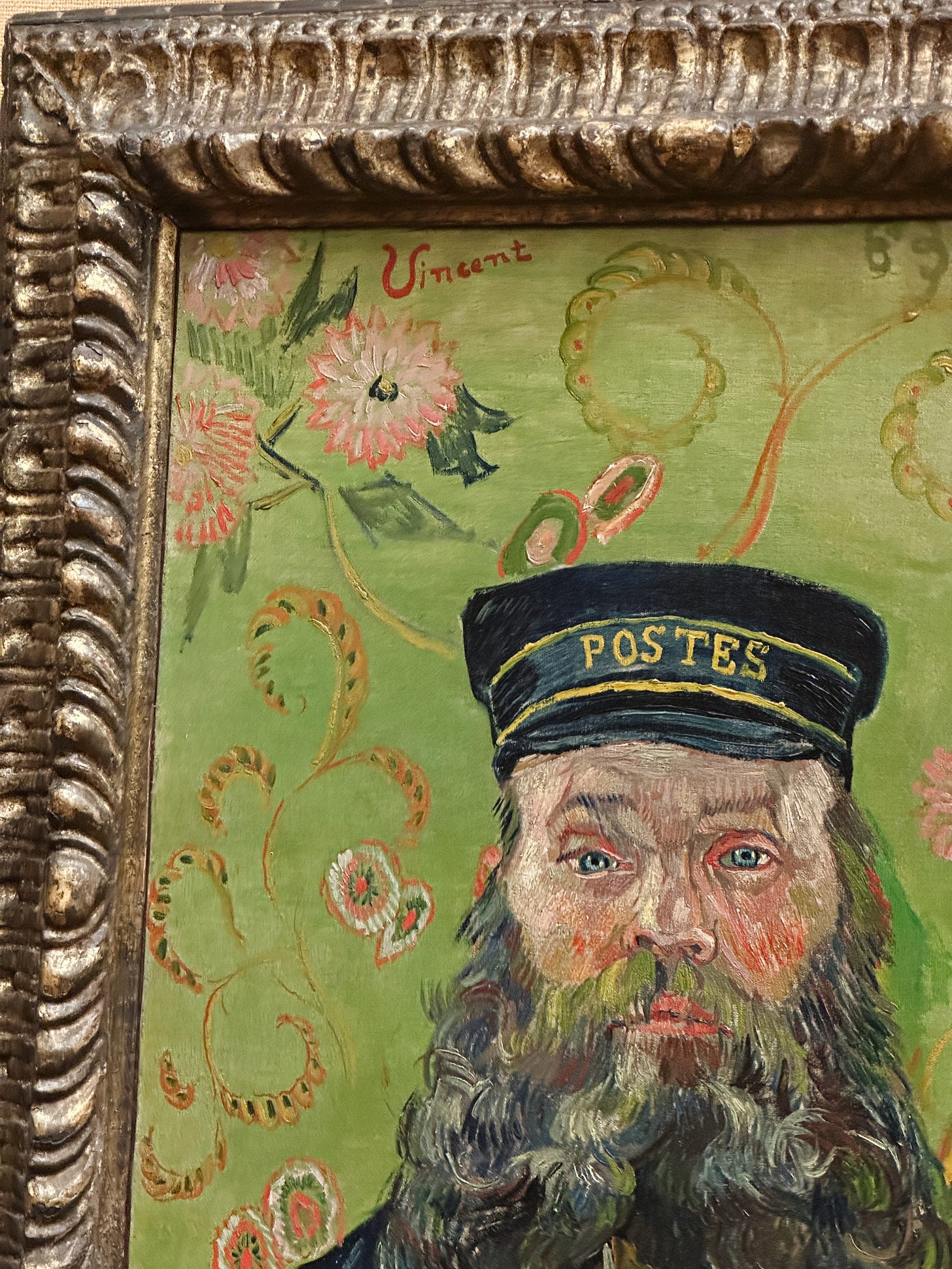
Matisse’s The Dance (1932-33)

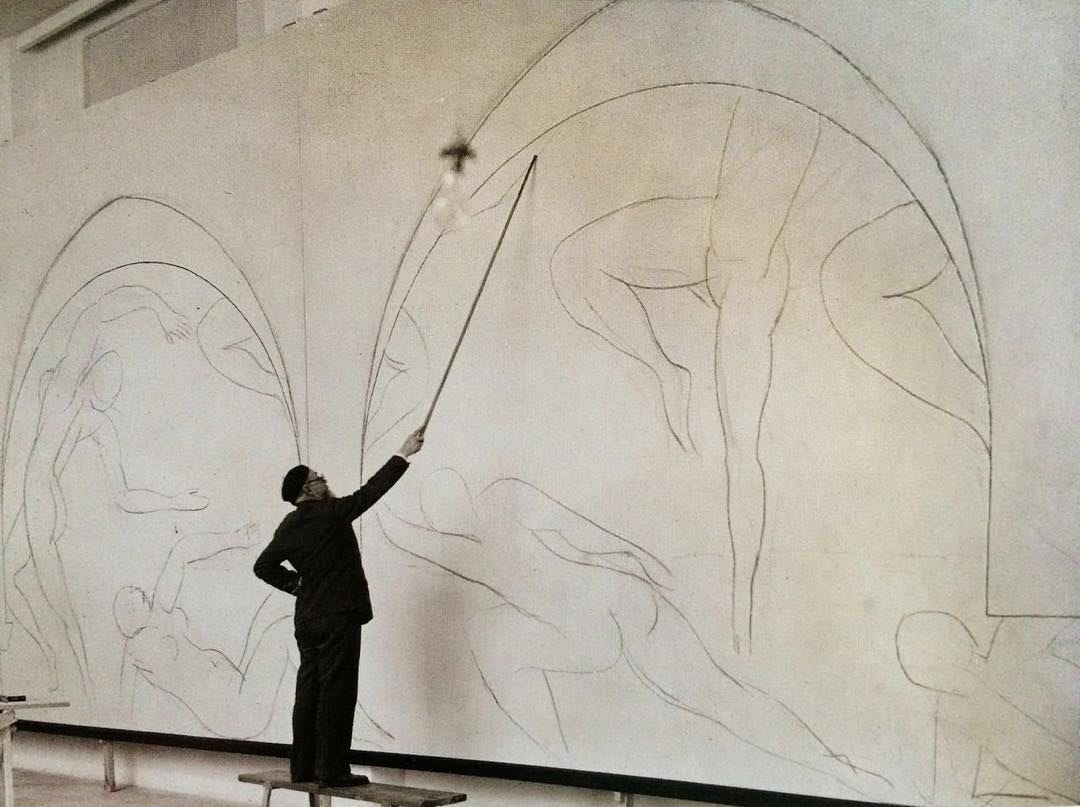
Picasso’s The Ascetic (1903)
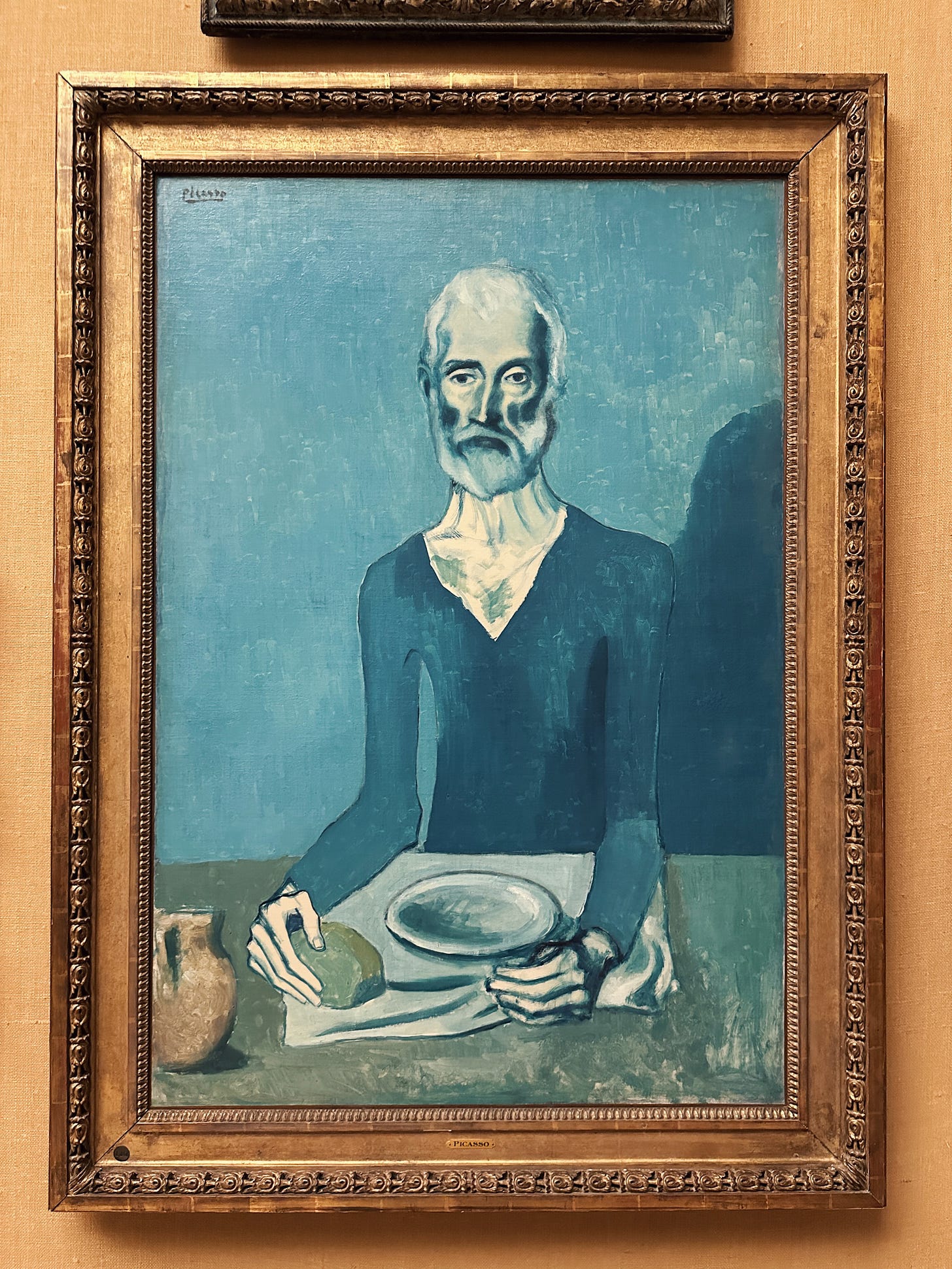
Secret history of color: blue
Homer didn’t have a word for it. Yves Klein invented his own shade of it. Vermeer died broke in devotion to it. Blue is the rarest color in nature. And we’ve spent centuries trying to capture it. Today, we’re diving into its secret history (!)…from the accidental discovery of Prussian Blue to Phoebe Philo’s Yves Klein moment at 2017 Celine.
Modigliani’s Portrait of Jeanne Hébuterne (1919)
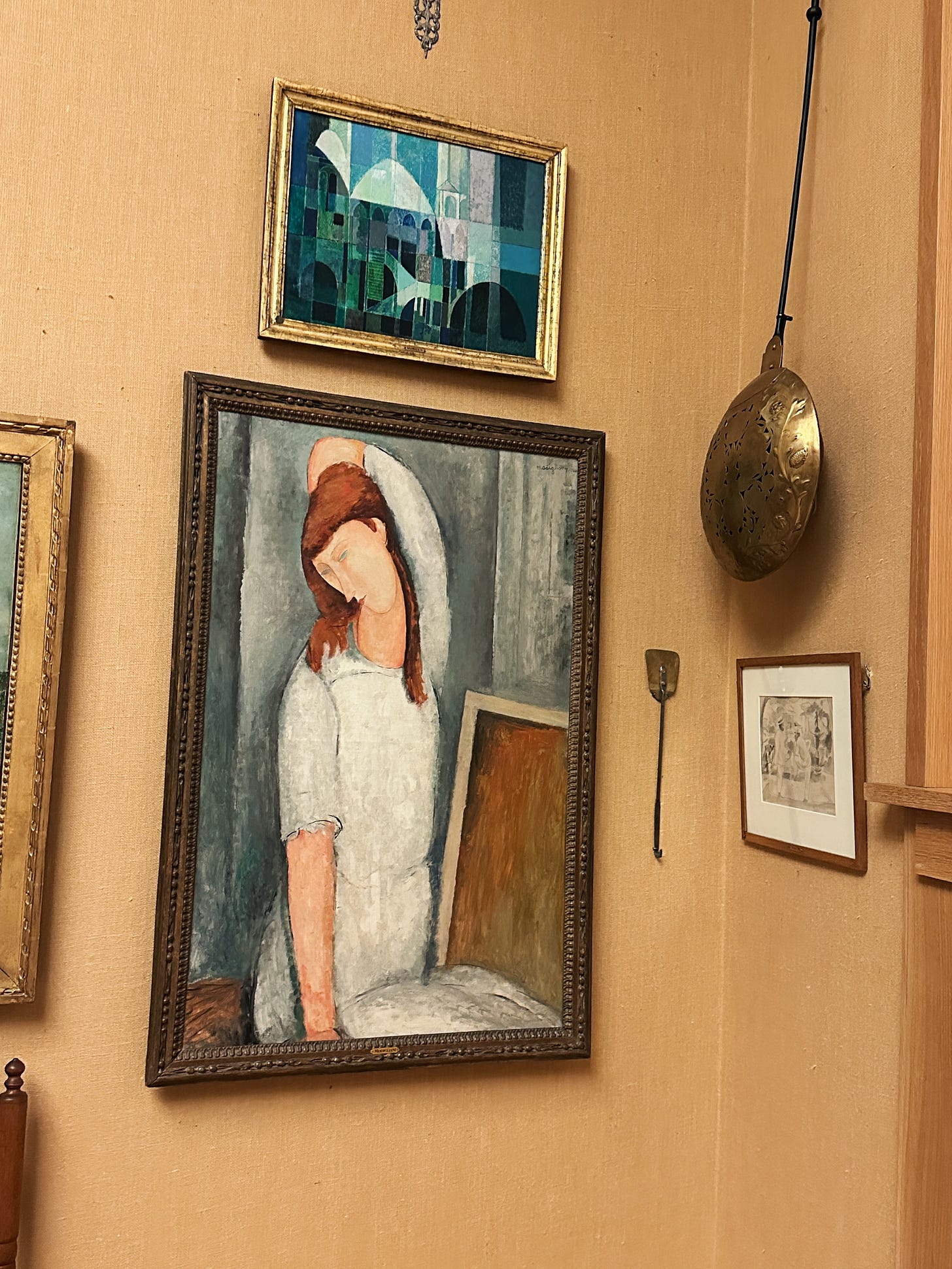
2:30 PM: The tour ended and we did a circle two more times. On every lap I saw something new - I swear I could probably have done ten more and have a new experience every time. That’s the magic of Barnes.


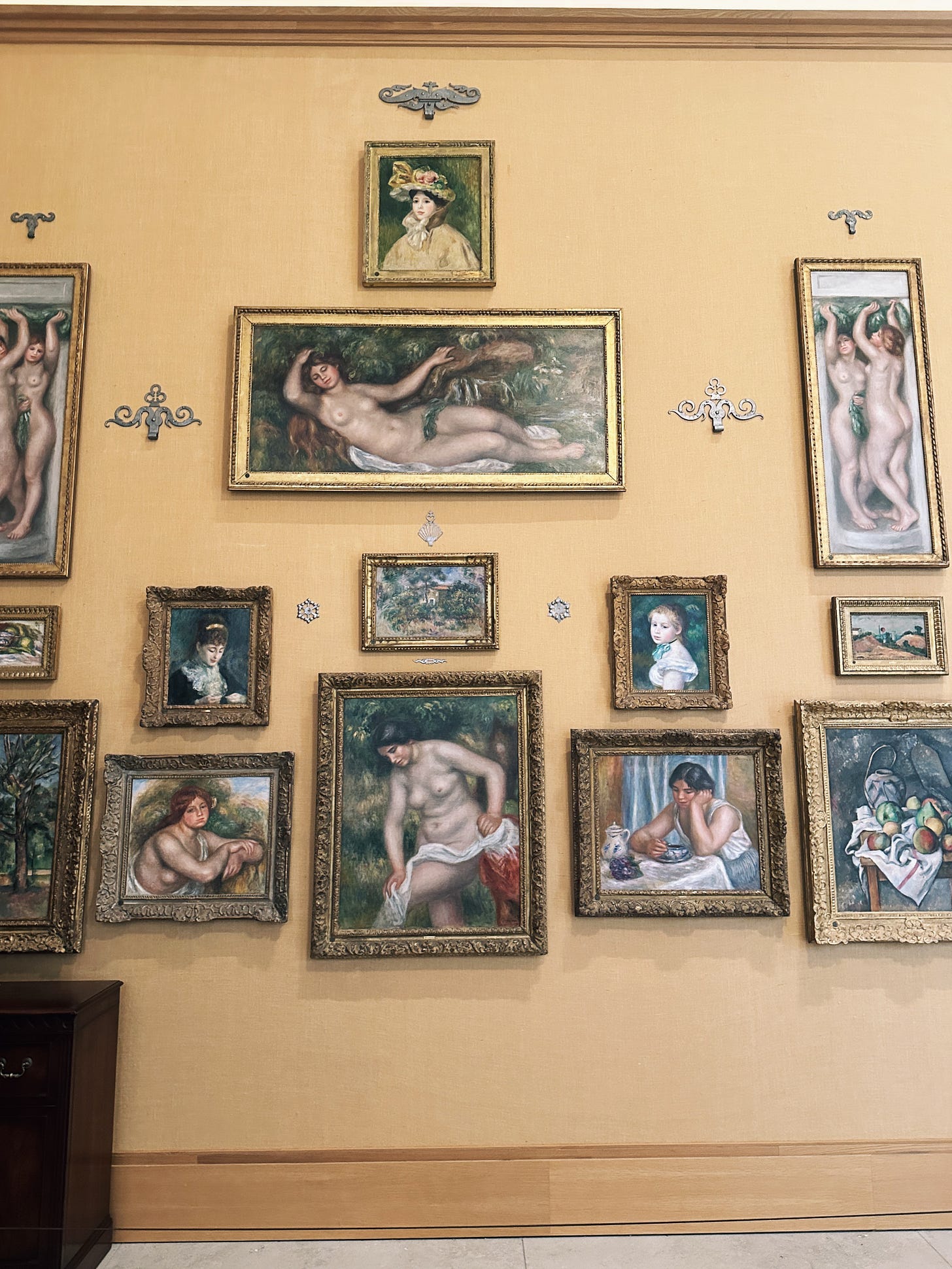
3:30 PM: hopped into the Cecily Brown exhibit after. We found it a little overstimulating after all the art we’d seen. As Alicia pointed out, rotating exhibits like these are for the donors. It’s a retention play. Save it for your last ten minutes.
4:00 PM: We left the museum and wandered into a little used bookstore across the street. There was a great edit of vintage art books and a bookstore cat was sleeping on the shelves.
4:15 PM: grabbed some decaf coffees before the train. We walked down the Schuylkill River river and joked that we were in Paris. It was that lovely of a day.
5:18 PM train: Marie and Alisha departed home. I was staying for the weekend (more tips on that below). At 11 PM, Alisha texted me from her table at Casa Chipriani (Barnes probs wouldn’t approve). Marie went to bed early (she’s writing a screenplay). It was one of the most fulfilling happiest days I’d had in a while - all thanks to our boy Dr. Barnes.
MAKE A WEEKEND OUT OF IT:
It’s easy (and not too expensive) to stay the weekend - I did. Here’s how to complete the trip:
To stay:
Yowie Hotel: ok this is a hidden gem - and where I stayed. Yowie is a design store I’ve followed on IG for years - and it turns out they have a hotel too. Expect candy-colored bathroom tiles, stacks of design books, and Ghia in the Fridge. It is super affordable, I locked it in for $154 a night.
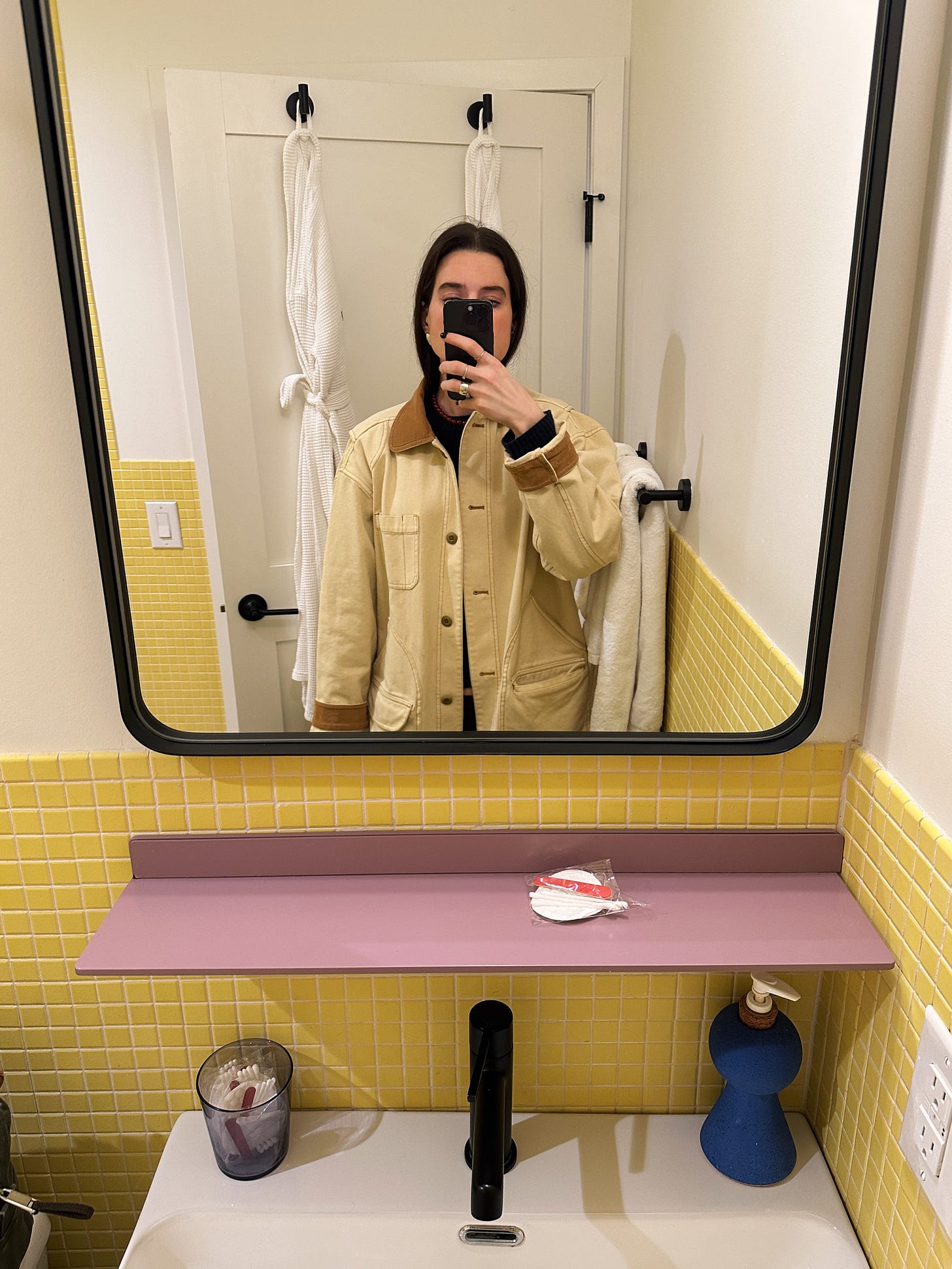
To see:
Philadelphia Museum of Art: yup, more art if you can handle it. I barely could. My brain was exhausted so I stayed on the first floor & snapped pics of Degas ballet slippers and my favorite Brancusi sculpture to exist. After a trip to the Barnes, it’s hard to view neat, white-walled museums the same way again. Where is my fancy wallpaper and silver?!
Historic houses, anyone?! Whenever visiting new cities, I love seeking out the oldest architecture. There are some great preserved row houses from 1700s in Old City (Pine / Spruce Streets between 5th and 10th). Also hit Spruce Street from 20th down the Schuykill River.
Shopping! Three cute shops right next to each other. Stickball is the best vintage, Omoi is cute Japaese stationery (the pencil The Row handed out at their FA24 show), and Vagabond for one-of-a-kind clothes.
To eat:
Zahav / Laser Wolf / Bar Jaffa trio: in order of how hard to get in. My friend Andrew is the chef/partner there & just opened Bar Jaffa where we paid him a visit - he loves Alex Mill work jackets (as do I)
Royal Sushi & Izakaya: sit at the counter for a la carte or treat yourself to a the full Omakase - Alex Delaney said it is the “best omakase” in Philly.
Parc: what my friend Sheely called “Philly’s Balthazar”
Friday Saturday Sunday: sit at the bar!
OK hope this guide can serve you well on your future trip - let’s compare notes. Where else should I be art tripping? Comment or find me on Insta @rfranderson & let me know.


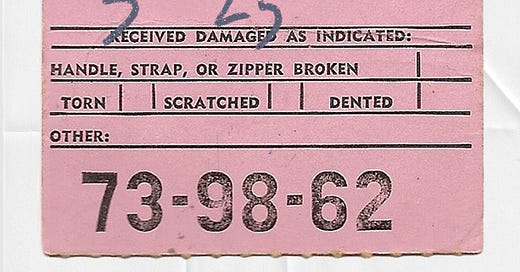




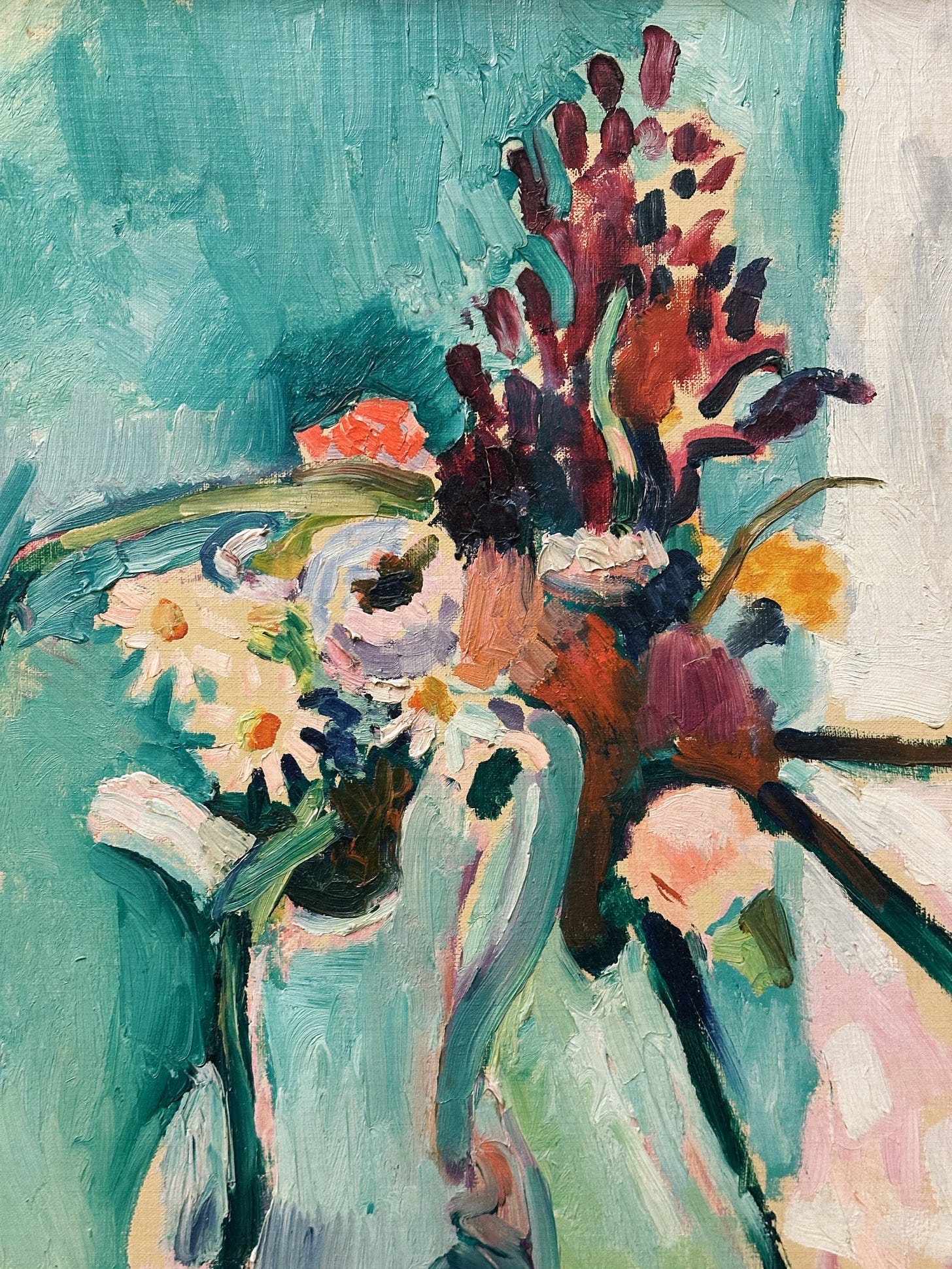
I want to go to Philly with you pls
Love this! From the philly area and live mostly in nyc now. I definitely recommend that people stay for dinner in the city! So many cuisines to choose from